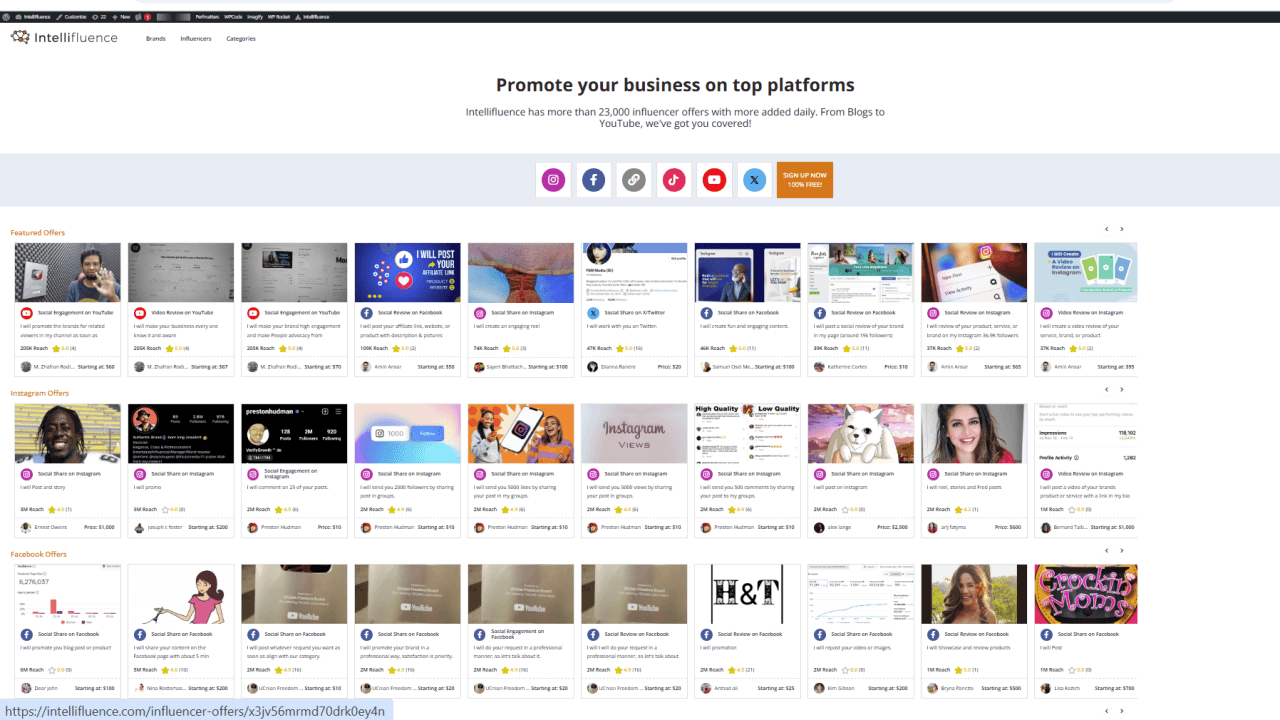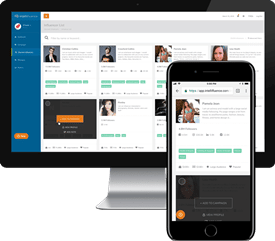Last Updated on November 19, 2024
In today’s fast-paced digital world, capturing consumer attention is more challenging than ever. Traditional advertising methods are often overlooked as audiences become increasingly adept at filtering out overt marketing messages. Enter buzz marketing—a strategy that focuses on generating excitement and word-of-mouth promotion to elevate brand awareness. But what is buzz marketing exactly, and how does it differ from influencer marketing? This article delves into the buzz marketing definition, compares it with influencer marketing, and outlines effective strategies and best practices for brands aiming to create a lasting impression.
Understanding Buzz Marketing
Buzz marketing is a viral marketing technique centered on creating hype and anticipation around a product, service, or brand. The primary goal is to spark conversations among consumers, leading to organic word-of-mouth promotion. By crafting messages or experiences that are intriguing, unexpected, or even controversial, brands can encourage people to talk about them, both online and offline.
Buzz Marketing Examples:
- The ALS Ice Bucket Challenge: In 2014, the ALS Association launched a campaign where participants dumped ice water over their heads and challenged others to do the same or donate to charity. The campaign went viral, raising over $115 million and significantly increasing awareness of ALS.
- Old Spice’s “The Man Your Man Could Smell Like”: This humorous and quirky advertising campaign featured actor Isaiah Mustafa and quickly became a cultural phenomenon, boosting Old Spice’s sales and brand recognition.
Buzz Marketing vs. Influencer Marketing
While buzz marketing and influencer marketing both aim to enhance brand visibility and engagement, they employ different approaches.
Influencer Marketing involves collaborating with individuals who have a substantial following on social media platforms. These influencers promote a brand’s products or services to their audience, leveraging their credibility and relationship with followers to drive engagement and sales.
As a brand using Intellifluence, you have the option to collaborate with influencers by selecting those you believe are a good fit for your brand from our database. Alternatively, you can choose to collaborate with an influencer based on proposals they have created located on our Influencer Offers page.

Key Differences:
- Approach and Control: Buzz marketing focuses on creating content or experiences that naturally encourage people to share and discuss. Brands have less control over the spread of the message once it’s out in the world. In contrast, influencer marketing involves a more controlled and direct promotion through influencers who disseminate predetermined messages.
- Audience Engagement: Buzz marketing targets a broad audience by aiming to go viral, while influencer marketing leverages the influencer’s specific follower base, which may be niche or broad depending on the influencer.
- Cost: Influencer marketing often requires monetary compensation or incentives for the influencers, whereas buzz marketing can be more cost-effective by relying on organic sharing.
Are They Connected?
Buzz marketing can be a component of influencer marketing when influencers are used to kickstart or amplify the buzz. However, they are distinct strategies. Buzz marketing focuses on creating content that inherently encourages sharing, whereas influencer marketing relies on the reach and influence of specific individuals.
Brands utilizing Intellifluence can easily access the follower count of an influencer as this information is displayed on the influencer’s profile card. Furthermore, by selecting the influencer and hovering over the appropriate social media icon on their profile page, brands can view the follower count for that specific platform.
Boosting Brand Awareness with Buzz Marketing Tactics
To effectively utilize buzz marketing, brands can employ various tactics and strategies designed to generate excitement and encourage sharing.
-
Engagement
Creating engaging content is crucial for buzz marketing. The more interactive and participatory the content, the more likely it is to be shared.
- Interactive Campaigns: Develop campaigns that encourage user participation, such as challenges, quizzes, or interactive videos.
- User-Generated Content (UGC): Encourage consumers to create and share their own content related to your brand, fostering a sense of community and involvement.
-
Using Taboo or Outrageous Subjects
Incorporating taboo or outrageous elements can grab attention and spark conversations, but it’s essential to tread carefully to avoid alienating audiences.
- Shock Value: Introduce unexpected or provocative elements that surprise and intrigue consumers.
- Humor and Satire: Use humor to address sensitive topics in a way that is engaging yet respectful.

Featured Influencer: Steven Hartka
I am a 25 year old DJ in the Baltimore, MD area. Apart from playing and making music, I am very interested in movies. Love going out to new places to eat. I am into having a clean bedroom, and enjoy things like candles and skincare products.
-
Exclusivity and Scarcity
Creating a sense of exclusivity or urgency can motivate consumers to act quickly and share the opportunity with others.
- Limited Editions: Release products or services in limited quantities to generate hype.
- Early Access: Offer exclusive previews or beta access to select consumers, encouraging them to share their experiences.
-
Storytelling
Compelling stories can resonate emotionally with consumers, making them more likely to share the content.
- Brand Narratives: Share the story behind your brand, its mission, and values.
- Customer Stories: Highlight testimonials or success stories from real customers.
Best Practices for Implementing Buzz Marketing
For brands looking to leverage buzz marketing effectively, adhering to best practices ensures campaigns are both impactful and aligned with brand values.
-
Identifying and Knowing Your Target Audience
Understanding your audience is foundational. Knowing their preferences, behaviors, and pain points allows you to tailor campaigns that resonate.
- Market Research: Conduct surveys, focus groups, and data analysis to gather insights.
- Audience Segmentation: Divide your audience into segments based on demographics, psychographics, or behavior for more targeted messaging.
-
Developing a Sound Strategy
A well-planned strategy outlines clear objectives and the steps needed to achieve them.
- Set Clear Goals: Define what success looks like, whether it’s increased brand awareness, engagement, or sales.
- Channel Selection: Choose the appropriate platforms where your target audience is most active.
- Content Planning: Develop a content calendar that outlines what will be shared, when, and through which channels.
-
Building Anticipation
Generating excitement before a campaign or product launch can amplify its impact.
- Teasers and Trailers: Release sneak peeks to pique interest.
- Countdowns: Use countdown timers on your website or social media to build suspense.
- Mystery Campaigns: Keep certain details under wraps to encourage speculation and discussion.
-
Quantifying Results
Measuring the effectiveness of buzz marketing efforts is essential for understanding ROI and informing future strategies.
- Analytics Tools: Utilize tools like Google Analytics, social media insights, and marketing software to track engagement metrics.
- KPIs: Define key performance indicators such as reach, engagement rate, conversion rate, and sentiment analysis.
- Feedback Collection: Gather feedback from participants to gain qualitative insights.
Buzz marketing offers a dynamic way for brands to cut through the noise and connect with consumers on a deeper level. By understanding the buzz marketing definition and employing strategies that encourage organic sharing and discussion, brands can create memorable experiences that resonate with their audience. While it shares similarities with influencer marketing, buzz marketing stands apart in its approach and potential for widespread, organic reach.
Implementing buzz marketing effectively requires a keen understanding of your target audience, a solid strategic foundation, and a commitment to measuring and learning from each campaign. Brands that embrace these best practices are well-positioned to not only generate buzz but also build lasting relationships with consumers.
In a market where consumer attention is a valuable commodity, buzz marketing can be the key to unlocking increased brand awareness and engagement. By creating compelling, share-worthy content and experiences, brands can harness the power of word-of-mouth promotion to achieve their marketing goals.

SallyBot is committed to helping users get the most out of Intellifluence. By helping brands create campaigns, providing unparalleled customer service and offering useful advice, nothing makes SallyBot happier than hearing she is liked… Really, really liked.






